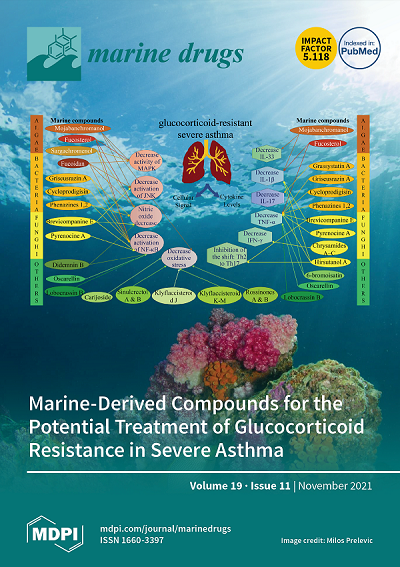Nutritional Value and Productivity Potential of the Marine Microalgae Nitzschia laevis, Phaeodactylum tricornutum and Isochrysis galbana
IF 4.9
2区 医学
Q1 CHEMISTRY, MEDICINAL
引用次数: 0
Abstract
Microalgae are considered promising sustainable feedstocks for the production of food, food additives, feeds, chemicals and various high-value products. Marine microalgae Phaeodactylum tricornutum, Isochrysis galbana and Nitzschia laevis are rich in fucoxanthin, which is effective for weight loss and metabolic diseases. The selection of microalgae species with outstanding nutritional profiles is fundamental for novel foods development, and the nutritional value of P. tricornutum, I. galbana and N. laevis are not yet fully understood. Hence, this study investigates and analyzes the nutritional components of the microalgae by chromatography and mass spectrometry, to explore their nutritional and industrial application potential. The results indicate that the three microalgae possess high nutritional value. Among them, P. tricornutum shows significantly higher levels of proteins (43.29%) and amino acids, while I. galbana has the highest content of carbohydrates (25.40%) and lipids (10.95%). Notwithstanding that P. tricornutum and I. galbana have higher fucoxanthin contents, N. laevis achieves the highest fucoxanthin productivity (6.21 mg/L/day) and polyunsaturated fatty acids (PUFAs) productivity (26.13 mg/L/day) because of the competitive cell density (2.89 g/L) and the advantageous specific growth rate (0.42/day). Thus, compared with P. tricornutum and I. galbana, N. laevis is a more promising candidate for co-production of fucoxanthin and PUFAs.海洋微藻 Nitzschia laevis、Phaeodactylum tricornutum 和 Isochrysis galbana 的营养价值和生产潜力
微藻被认为是生产食品、食品添加剂、饲料、化学品和各种高价值产品的有前途的可持续原料。海洋微藻 Phaeodactylum tricornutum、Isochrysis galbana 和 Nitzschia laevis 含有丰富的岩藻黄素,对减肥和代谢性疾病有效。选择具有优异营养成分的微藻物种是开发新食品的基础,而三 角藻、蚬藻和月嫂藻的营养价值尚未得到充分了解。因此,本研究通过色谱法和质谱法研究和分析微藻的营养成分,探索其营养和工业应用潜力。结果表明,这三种微藻具有很高的营养价值。其中,P. tricornutum 的蛋白质(43.29%)和氨基酸含量明显较高,而 I. galbana 的碳水化合物(25.40%)和脂类(10.95%)含量最高。尽管 P. tricornutum 和 I. galbana 的岩藻黄质含量较高,但 N. laevis 的岩藻黄质生产率(6.21 毫克/升/天)和多不饱和脂肪酸(PUFAs)生产率(26.13 毫克/升/天)最高,这是因为其细胞密度(2.89 克/升)和特定生长率(0.42/天)具有竞争力。因此,与 P. tricornutum 和 I. galbana 相比,N. laevis 是更有希望联合生产岩藻黄素和 PUFAs 的候选者。
本文章由计算机程序翻译,如有差异,请以英文原文为准。
求助全文
约1分钟内获得全文
求助全文
来源期刊

Marine Drugs
医学-医药化学
CiteScore
9.60
自引率
14.80%
发文量
671
审稿时长
1 months
期刊介绍:
Marine Drugs (ISSN 1660-3397) publishes reviews, regular research papers and short notes on the research, development and production of drugs from the sea. Our aim is to encourage scientists to publish their experimental and theoretical research in as much detail as possible, particularly synthetic procedures and characterization information for bioactive compounds. There is no restriction on the length of the experimental section.
 求助内容:
求助内容: 应助结果提醒方式:
应助结果提醒方式:


